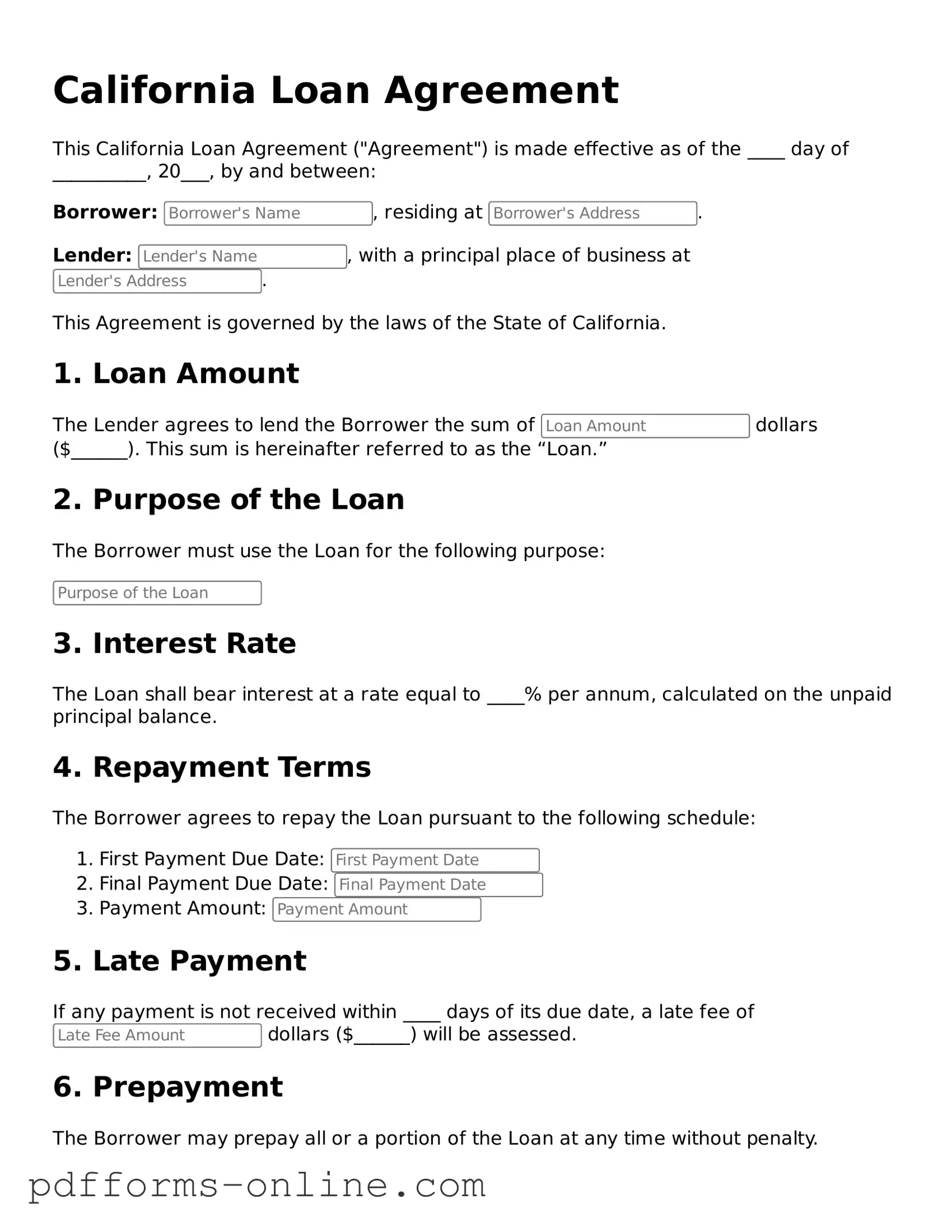Valid California Loan Agreement Template
A California Loan Agreement form is a legal document that outlines the terms and conditions of a loan between a lender and a borrower. This form serves to protect the interests of both parties, ensuring clarity and mutual understanding regarding repayment schedules, interest rates, and other essential details. To get started on your loan agreement, fill out the form by clicking the button below.
Open This Loan Agreement Online
